Abstract
Fever appears to protect ectotherms against infectious disease perhaps because it increases their aerobic metabolic capacity, which is temperature-dependent. Mammals, however, have a high aerobic capacity and normally regulate a high body temperature. Thus, the further increase in temperature induced by interleukin-1 may be dangerous, and the resulting increase in aerobic capacity may not be necessary for an effective defense. In fact, recent evidence suggests that although the neuroendocrine cold defense responses that are stimulated in fever enhance the defenses of the host, the increase in temperature harms these defenses. Data, however, are scarce and equivocal, and the function of fever in mammals is still uncertain.
Full text
PDF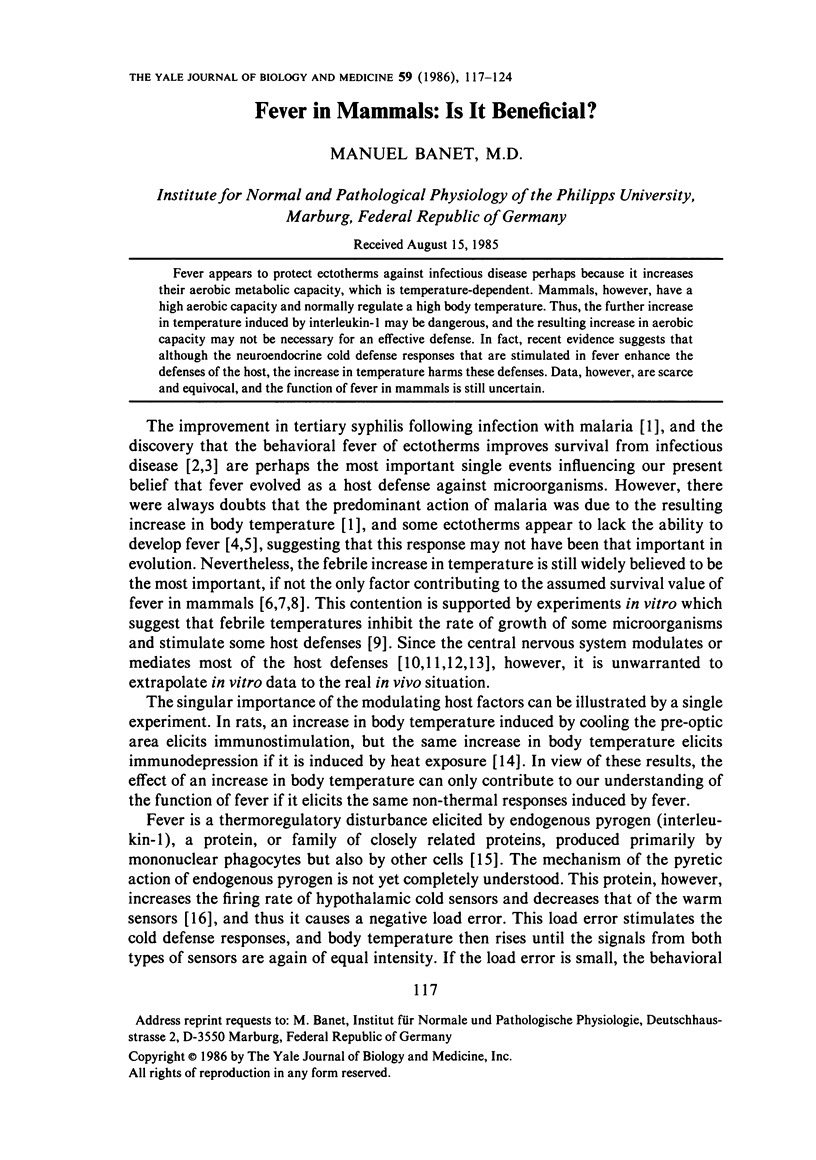
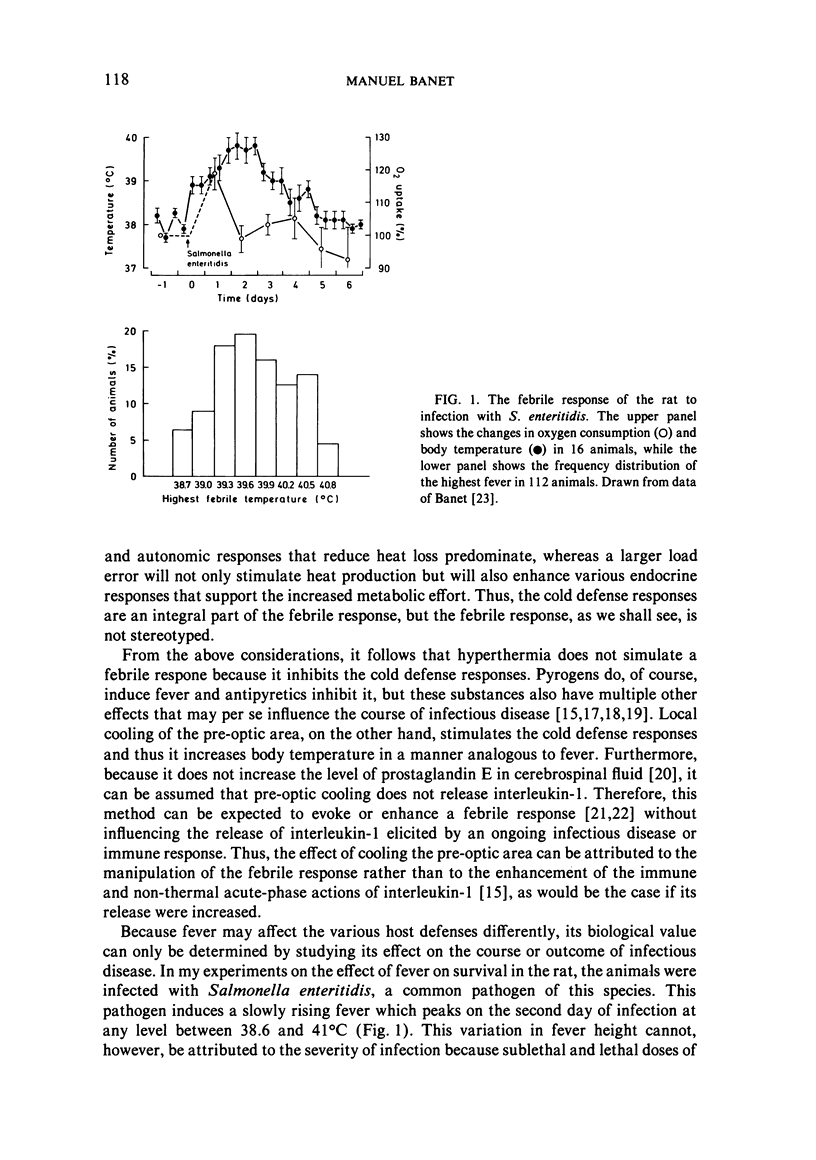
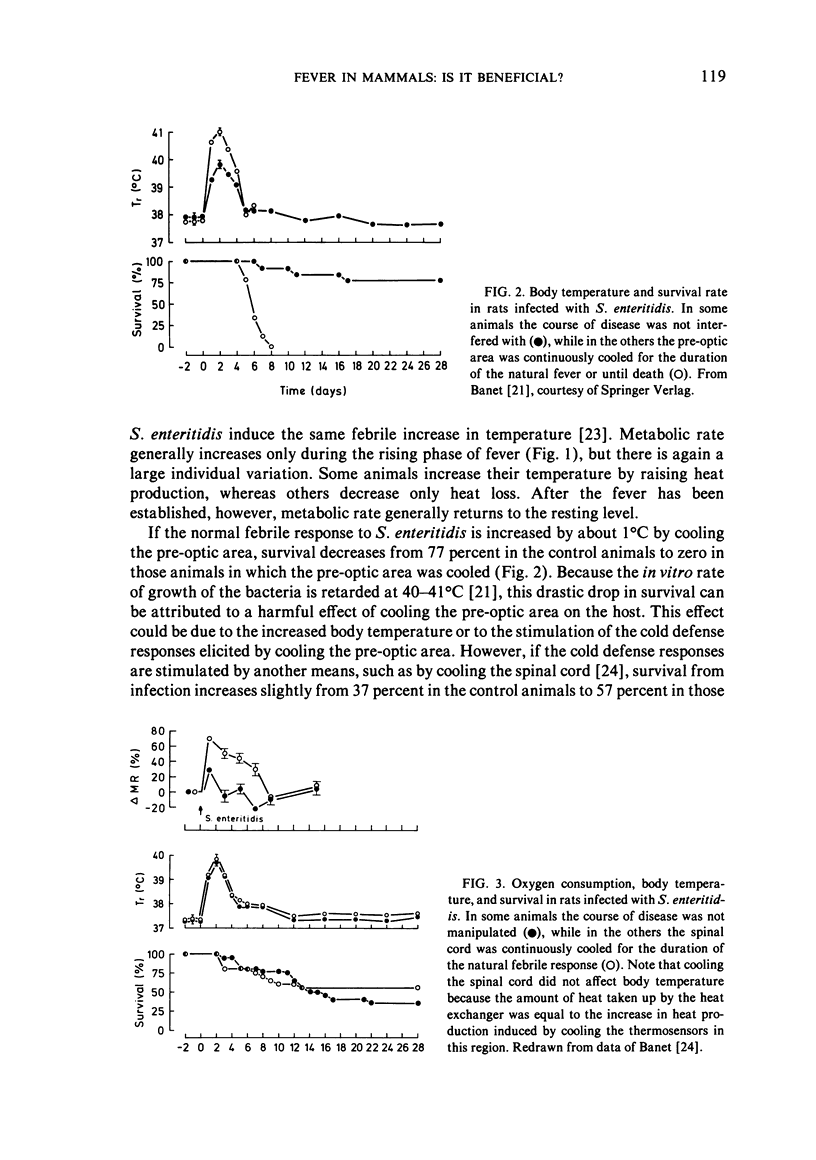
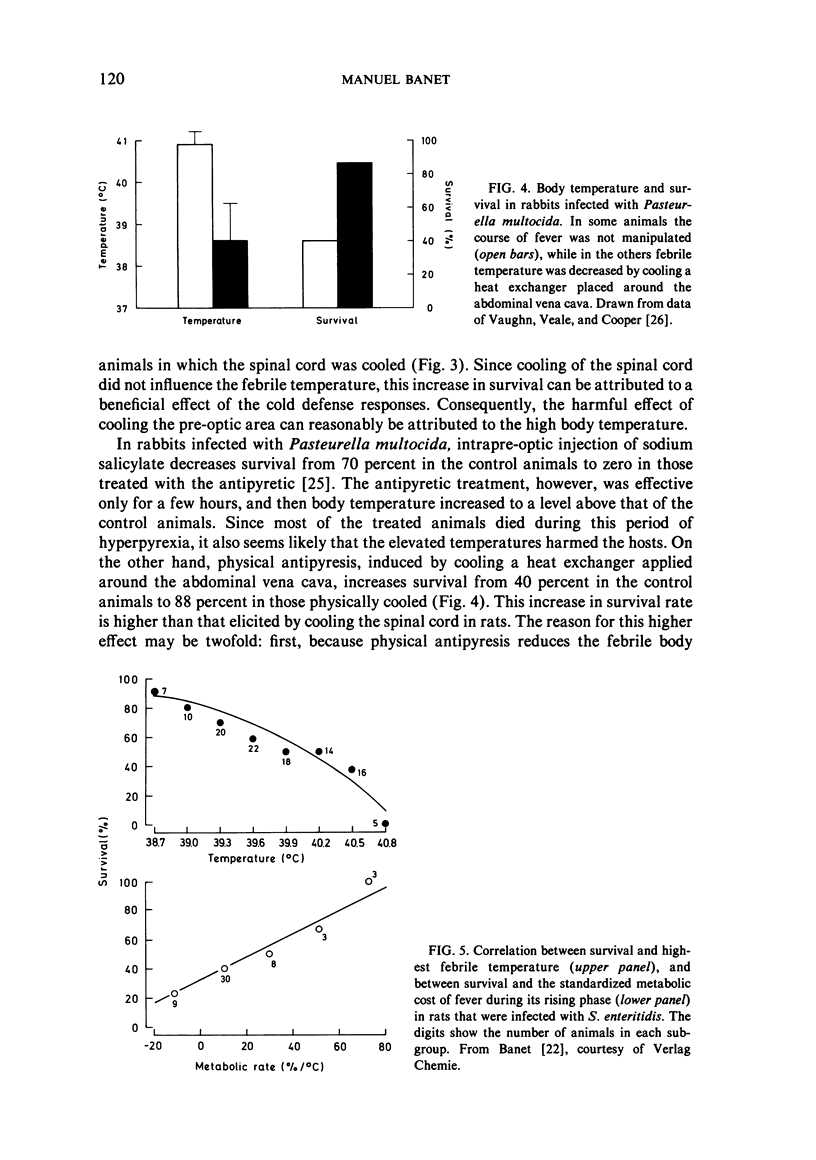
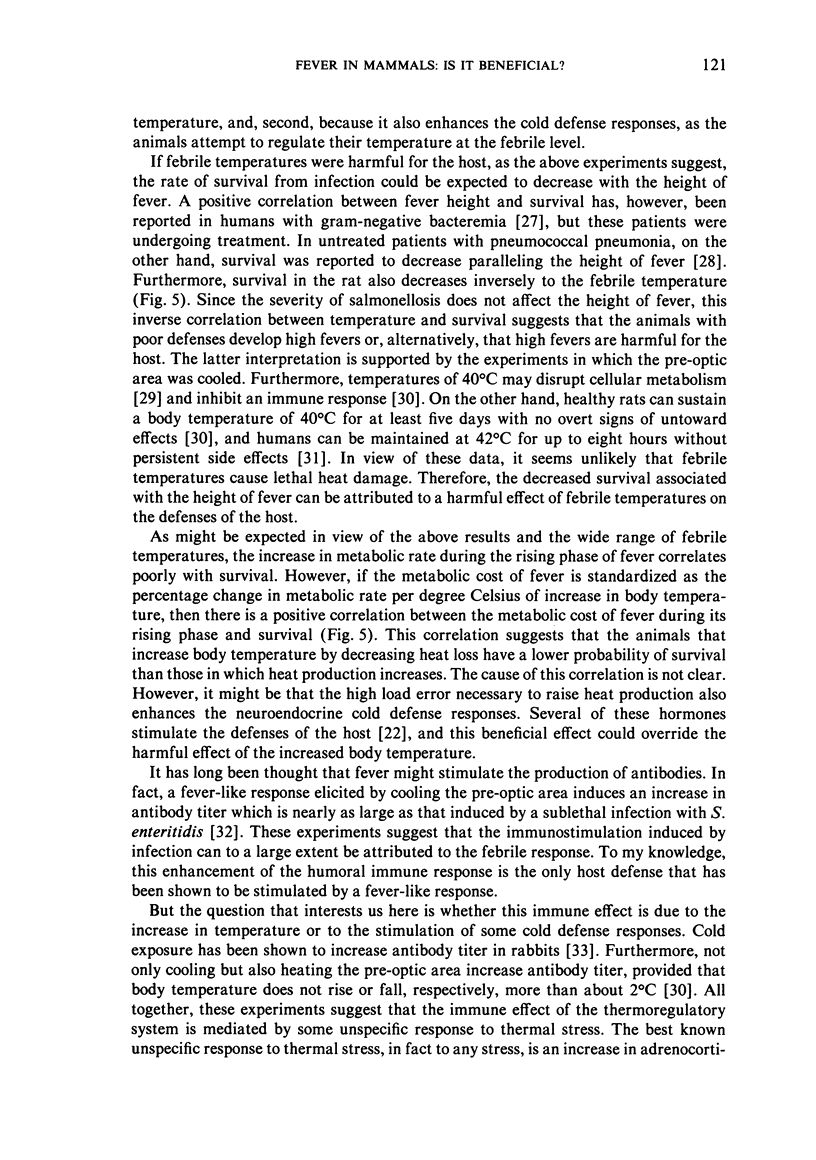
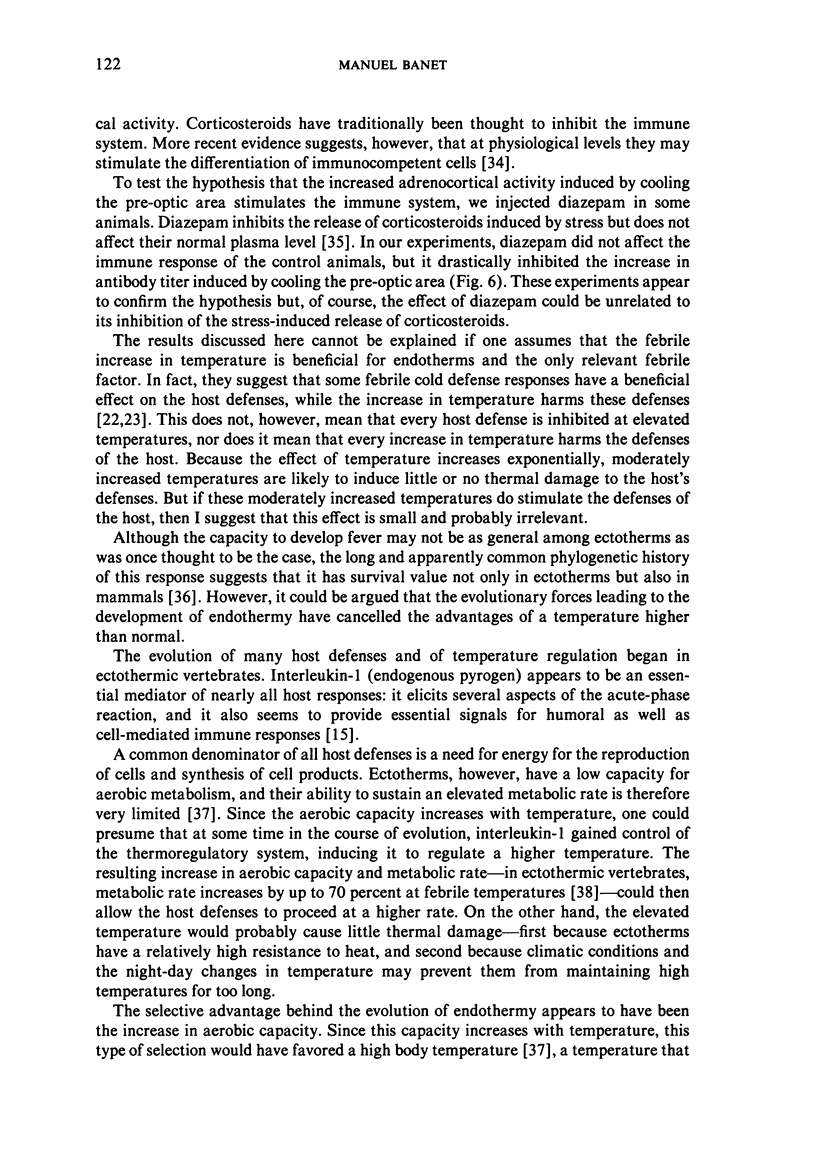
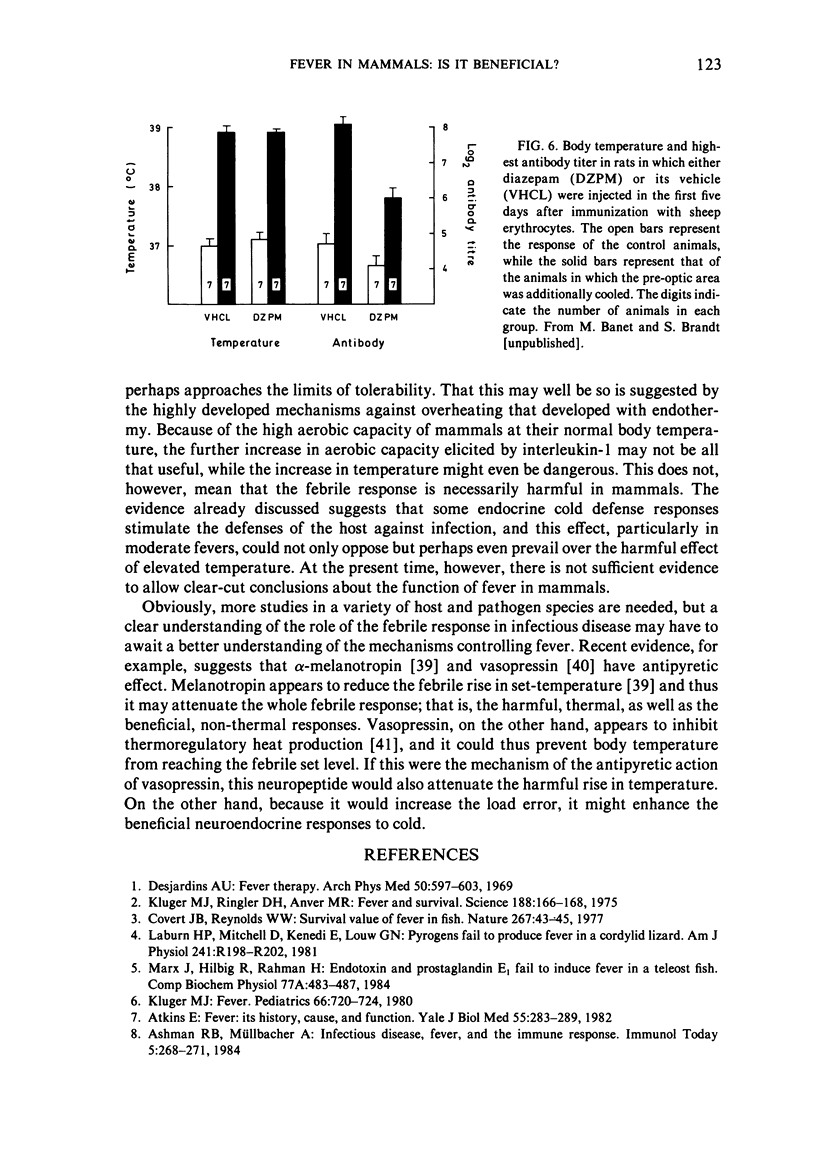
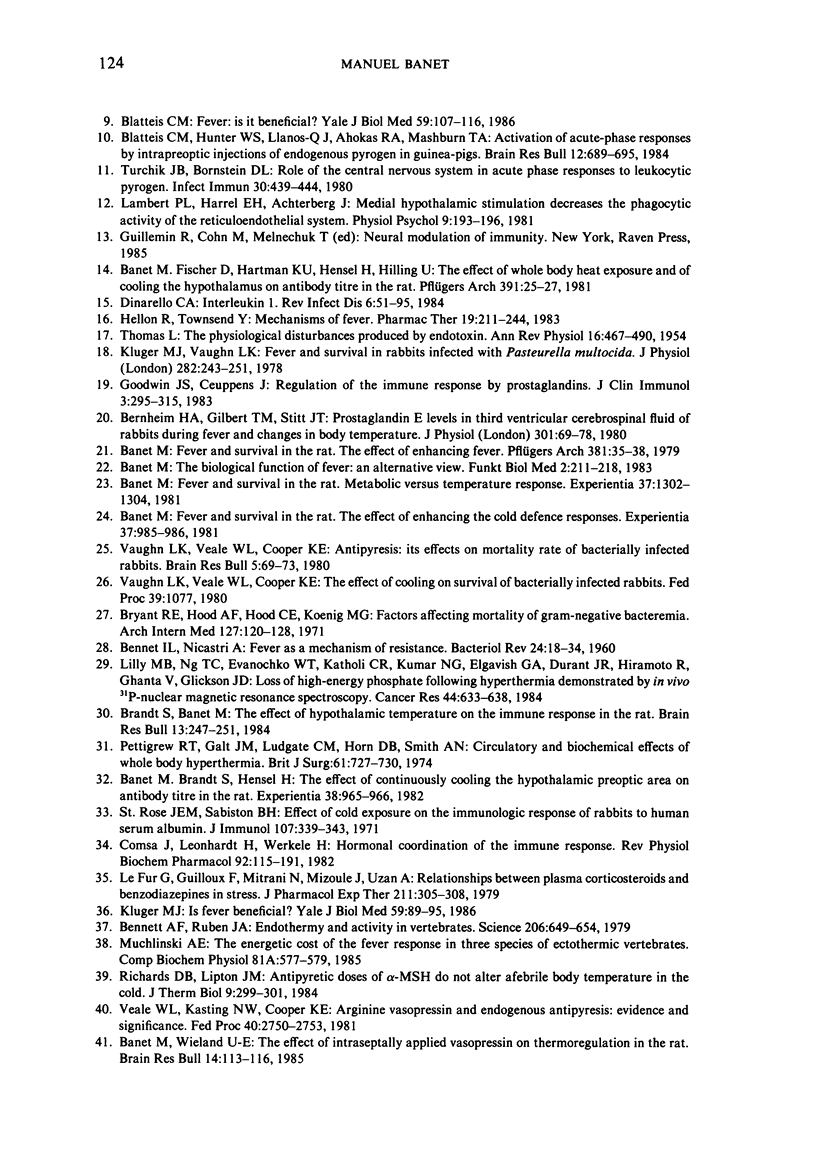
Selected References
These references are in PubMed. This may not be the complete list of references from this article.
- Atkins E. Fever: its history, cause, and function. Yale J Biol Med. 1982 May-Aug;55(3-4):283–289. [PMC free article] [PubMed] [Google Scholar]
- BENNETT I. L., Jr, NICASTRI A. Fever as a mechanism of resistance. Bacteriol Rev. 1960 Mar;24(1):16–34. doi: 10.1128/br.24.1.16-34.1960. [DOI] [PMC free article] [PubMed] [Google Scholar]
- Banet M., Brandt S., Hensel H. The effect of continuously cooling the hypothalamic preoptic area on antibody titre in the rat. Experientia. 1982 Aug 15;38(8):965–966. doi: 10.1007/BF01953680. [DOI] [PubMed] [Google Scholar]
- Banet M. Fever and survival in the rat. Metabolic versus temperature response. Experientia. 1981 Dec 15;37(12):1302–1304. doi: 10.1007/BF01948375. [DOI] [PubMed] [Google Scholar]
- Banet M. Fever and survival in the rat. The effect of enhancing fever. Pflugers Arch. 1979 Jul;381(1):35–38. doi: 10.1007/BF00582329. [DOI] [PubMed] [Google Scholar]
- Banet M. Fever and survival in the rat. The effect of enhancing the cold defence response. Experientia. 1981;37(9):985–986. doi: 10.1007/BF01971794. [DOI] [PubMed] [Google Scholar]
- Banet M., Fischer D., Hartmann K. U., Hensel H., Hilling U. The effect of whole body heat exposure and of cooling the hypothalamus on antibody titre in the rat. Pflugers Arch. 1981 Jul;391(1):25–27. doi: 10.1007/BF00580689. [DOI] [PubMed] [Google Scholar]
- Banet M., Wieland U. E. The effect of intraseptally applied vasopressin on thermoregulation in the rat. Brain Res Bull. 1985 Feb;14(2):113–116. doi: 10.1016/0361-9230(85)90070-x. [DOI] [PubMed] [Google Scholar]
- Bennett A. F., Ruben J. A. Endothermy and activity in vertebrates. Science. 1979 Nov 9;206(4419):649–654. doi: 10.1126/science.493968. [DOI] [PubMed] [Google Scholar]
- Bernheim H. A., Gilbert T. M., Stitt J. T. Prostaglandin E levels in third ventricular cerebrospinal fluid of rabbits during fever and changes in body temperature. J Physiol. 1980 Apr;301:69–78. doi: 10.1113/jphysiol.1980.sp013189. [DOI] [PMC free article] [PubMed] [Google Scholar]
- Blatteis C. M. Fever: is it beneficial? Yale J Biol Med. 1986 Mar-Apr;59(2):107–116. [PMC free article] [PubMed] [Google Scholar]
- Blatteis C. M., Hunter W. S., Llanos J., Ahokas R. A., Mashburn T. A., Jr Activation of acute-phase responses by intrapreoptic injections of endogenous pyrogen in guinea pigs. Brain Res Bull. 1984 Jun;12(6):689–695. doi: 10.1016/0361-9230(84)90149-7. [DOI] [PubMed] [Google Scholar]
- Brandt S., Banet M. The effect of hypothalamic temperature on the immune response in the rat. Brain Res Bull. 1984 Aug;13(2):247–251. doi: 10.1016/0361-9230(84)90124-2. [DOI] [PubMed] [Google Scholar]
- Bryant R. E., Hood A. F., Hood C. E., Koenig M. G. Factors affecting mortality of gram-negative rod bacteremia. Arch Intern Med. 1971 Jan;127(1):120–128. [PubMed] [Google Scholar]
- Comsa J., Leonhardt H., Wekerle H. Hormonal coordination of the immune response. Rev Physiol Biochem Pharmacol. 1982;92:115–191. doi: 10.1007/BFb0030504. [DOI] [PubMed] [Google Scholar]
- Covert J. B., Reynolds W. W. Survival value of fever in fish. Nature. 1977 May 5;267(5606):43–45. doi: 10.1038/267043a0. [DOI] [PubMed] [Google Scholar]
- Desjardins A. U. Fever therapy. Arch Phys Med Rehabil. 1969 Oct;50(10):597–603. [PubMed] [Google Scholar]
- Dinarello C. A. Interleukin-1. Rev Infect Dis. 1984 Jan-Feb;6(1):51–95. doi: 10.1093/clinids/6.1.51. [DOI] [PubMed] [Google Scholar]
- Goodwin J. S., Ceuppens J. Regulation of the immune response by prostaglandins. J Clin Immunol. 1983 Oct;3(4):295–315. doi: 10.1007/BF00915791. [DOI] [PubMed] [Google Scholar]
- Hellon R., Townsend Y. Mechanisms of fever. Pharmacol Ther. 1982;19(2):211–244. doi: 10.1016/0163-7258(82)90063-8. [DOI] [PubMed] [Google Scholar]
- Kluger M. J. Fever. Pediatrics. 1980 Nov;66(5):720–724. [PubMed] [Google Scholar]
- Kluger M. J. Is fever beneficial? Yale J Biol Med. 1986 Mar-Apr;59(2):89–95. [PMC free article] [PubMed] [Google Scholar]
- Kluger M. J., Ringler D. H., Anver M. R. Fever and survival. Science. 1975 Apr 11;188(4184):166–168. [PubMed] [Google Scholar]
- Kluger M. J., Vaughn L. K. Fever and survival in rabbits infected with Pasteurella multocida. J Physiol. 1978 Sep;282:243–251. doi: 10.1113/jphysiol.1978.sp012460. [DOI] [PMC free article] [PubMed] [Google Scholar]
- Laburn H. P., Mitchell D., Kenedi E., Louw G. N. Pyrogens fail to produce fever in a cordylid lizard. Am J Physiol. 1981 Sep;241(3):R198–R202. doi: 10.1152/ajpregu.1981.241.3.R198. [DOI] [PubMed] [Google Scholar]
- Le Fur G., Guilloux F., Mitrani N., Mizoule J., Uzan A. Relationships between plasma corticosteroids and benzodiazepines in stress. J Pharmacol Exp Ther. 1979 Nov;211(2):305–308. [PubMed] [Google Scholar]
- Lilly M. B., Ng T. C., Evanochko W. T., Katholi C. R., Kumar N. G., Elgavish G. A., Durant J. R., Hiramoto R., Ghanta V., Glickson J. D. Loss of high-energy phosphate following hyperthermia demonstrated by in vivo 31P-nuclear magnetic resonance spectroscopy. Cancer Res. 1984 Feb;44(2):633–638. [PubMed] [Google Scholar]
- Muchlinski A. E. The energetic cost of the fever response in three species of ectothermic vertebrates. Comp Biochem Physiol A Comp Physiol. 1985;81(3):577–579. doi: 10.1016/0300-9629(85)91028-x. [DOI] [PubMed] [Google Scholar]
- Pettigrew R. T., Galt J. M., Ludgate C. M., Horn D. B., Smith A. N. Circulatory and biochemical effects of whole body hyperthermia. Br J Surg. 1974 Sep;61(9):727–730. doi: 10.1002/bjs.1800610914. [DOI] [PubMed] [Google Scholar]
- St Rose J. E., Sabiston B. H. Effect of cold exposure on the immunologic response of rabbits to human serum albumin. J Immunol. 1971 Aug;107(2):339–343. [PubMed] [Google Scholar]
- THOMAS L. The physiological disturbances produced by endotoxins. Annu Rev Physiol. 1954;16:467–490. doi: 10.1146/annurev.ph.16.030154.002343. [DOI] [PubMed] [Google Scholar]
- Turchik J. B., Bornstein D. L. Role of the central nervous system in acute-phase responses to leukocytic pyrogen. Infect Immun. 1980 Nov;30(2):439–444. doi: 10.1128/iai.30.2.439-444.1980. [DOI] [PMC free article] [PubMed] [Google Scholar]
- Vaughn L. K., Veale W. L., Cooper K. E. Antipyresis: its effect on mortality rate of bacterially infected rabbits. Brain Res Bull. 1980 Jan-Feb;5(1):69–73. doi: 10.1016/0361-9230(80)90285-3. [DOI] [PubMed] [Google Scholar]
- Veale W. L., Kasting N. W., Cooper K. E. Arginine vasopressin and endogenous antipyresis: evidence and significance. Fed Proc. 1981 Nov;40(13):2750–2753. [PubMed] [Google Scholar]


